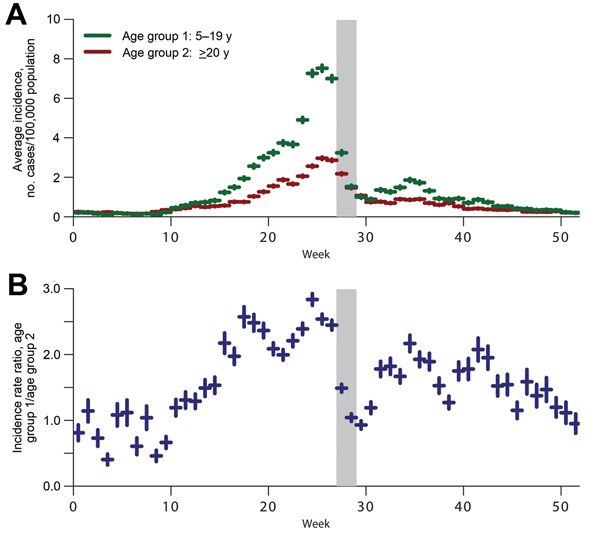Volume 20, Number 7—July 2014
Dispatch
Rates of Influenza-like Illness and Winter School Breaks, Chile, 2004–2010
Figure 1

Figure 1. Average weekly incidence rates for influenza-like illness (ILI) among schoolchildren 5–19 years of age and adults >20 years of age, Chile, 2004–2010Error bars represent the standard errors of the mean within each weekThe shaded area represents the period of the 2-week winter breakA) Average ILI incidence per 100,000 population, by weekB) Average ILI incidence rate ratio of schoolchildren-to-adult incidence by week Examination of a 2-week period and comparison of the averaged within–week-of-year ILI incidence rate ratio for children (5–19 years of age) to adults (>20 years of age) to the average of the ratio in the 2-week period immediately before provided 50 such comparisonsThe Bonferroni corrected α = 0.05; significance level is thus α = 0.05/50 = 0.001The only 2-week periods in which the ratio comparison p value was less than α = 0.001 were the periods beginning week 28 and 29 (which corresponds to the winter break), week 44 (which corresponds to the Reformation/All Saints Day 4-day weekend), week 21 (the week of the Naval Glories Day break), and week 38 (the Independence Day break).